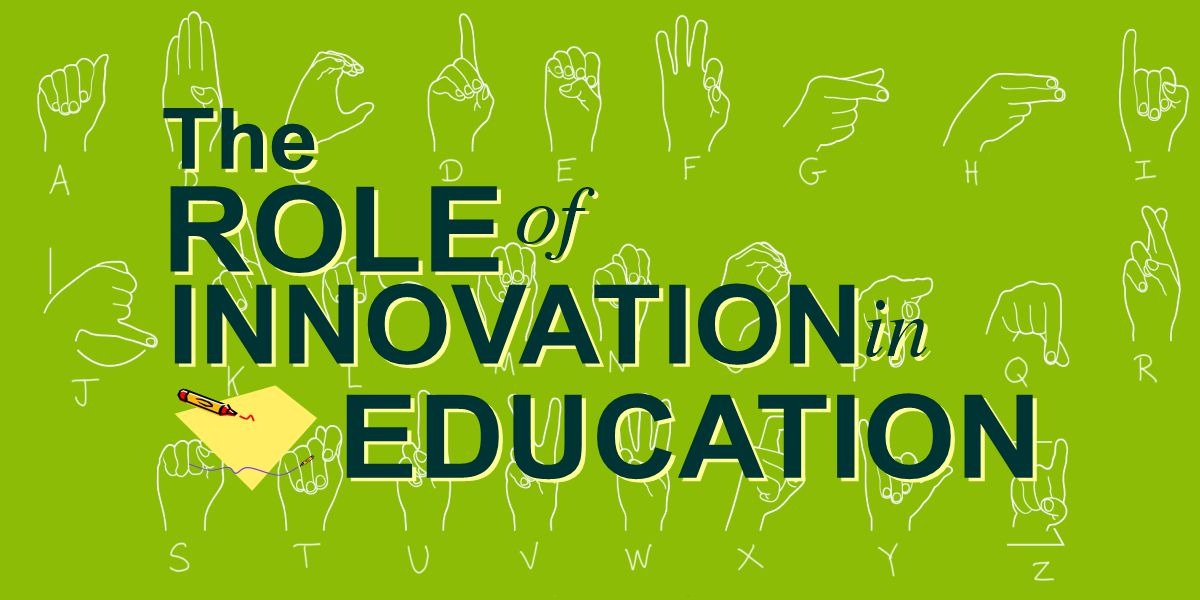The Role of Innovation in Education
Every day is a new day and that’s why, perhaps the most important question in life is ‘what’s next’. At some point of life, the question is asked by almost everyone in the world. This curiosity leads to a productive connection in humans, technologies, professions, cultures and industries. At the core of this simple question lies a need of novelty, a demand of innovation.
For making lives better, innovation is essential. Innovation could mean upskilling of the workforce or some breakthrough innovation for a nation. Persistently asking ‘what is next now’ pushes humans to strive for a better future. On a larger scale, an innovation demands a huge shift affecting many lives; but it is for the benefit of humanity. Innovations can change the ways of communication, entertainment, travel, meditation, prayers, yoga and, of course, education.
How Innovation is Bringing Radical Changes in the Education Sector
The challenging pandemic has forced mankind to innovate and develop new ways of imparting education to students of all age groups. No one is going to school but, (almost) everyone is learning. Innovation has brought a big change in the way students are learning and thinking. This innovation has rewired everyone’s views about the world around them. A growing use of smartphones and online services enabled by the latest communication technology is pushing the limits of how a student can learn.
But unfortunately, this is beneficial only for those students who are fortunate enough to access it and whose parents are educated enough to understand how the virtual world functions. Many are left behind lurching in the dark. The technology must reach the last kid standing and this should be a responsibility of every stakeholder to make this happen. Schools and governments must take further action to help such students. This means another wave of innovation at a larger scale.
Empathy is the Need of the Hour
So perhaps the next revolution that everyone should aspire to, is empathic and societal. It will give way to innovation that will truly help every child. As far as innovation in education is concerned, the world cannot forget the contributions of Louis Braille. He created a unique braille system of reading and writing that completely changed the lives of visually impaired people all over the world. This shows that the goal of innovation, certainly, should be to tackle the real problems that humans are facing. Given this, what is required in education is not innovation, but empathic innovation–how it should be taught, what should be taught and what is the cost involved.
In fact, the world has started to see the beginning of an incredible innovation in learning and teaching. There has never been such an urgent need for innovation in education delivery systems globally. A creative way of teaching and learning as per the needs of the population, is the demand of today. Thankfully, the stakeholders have a burning desire in them to change the education scenario. Look around yourself, you will find that many innovative ways of teaching are already in place that are being used by many students. Their benefits are manifold, but they should be cost-effective.
The Gurukul System & Innovation
In this era every form of education has been challenged including the ancient Indian Gurukul system of education. The key aim of Gurukuls is to impart comprehensive education in all areas of knowledge, including yogic practices, Vedic science, spirituality, moral science and much more in a natural setting and under the guidance of a spiritual master. Innovation in the form of digital education is much needed to transform the education imparted in Gurukuls and it is the demand of this era.
Final Thoughts
The overall development of mankind is impossible without quality education. Innovative methods of teaching must be devised to ensure quality education reaches even the marginalized sectors of society. That will happen if all the stakeholders strive collectively, with empathy and dedication, to find a concrete solution.

